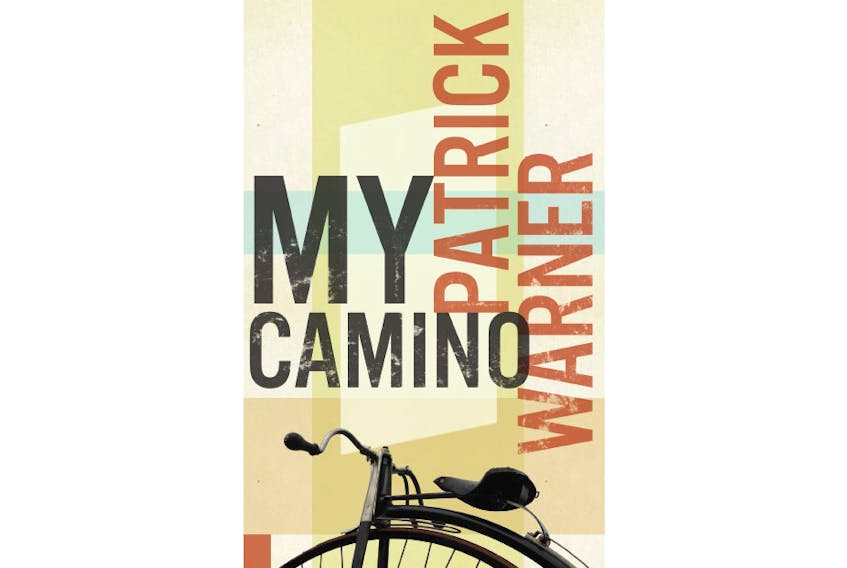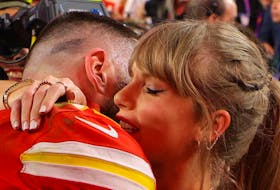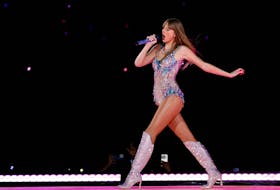Biblioasis is a small, independent publisher with a focus on literary fiction, known to punch above their weight, with an impressive list of titles shortlisted for or outright winning major awards (Giller Prize, Governor General Awards).

Patrick Warner is a poet and novelist (in that published order) with no fear of going dark. His topics include anorexia, aging and deceased (possibly dispatched) spouses, often depicted in tones of frank cruelty, sharp-edged humour and weird beauty.
“My Camino” centres on three characters: Floss, Budsy and the Apostle John. Floss “the art maven, the powerhouse … Jar-always-half-full Floss, whose mouth, even when she was resting, bowed upwards at the corners”; Budsy, an Irish immigrant, “red-haired, white-skinned, weak-chinned … hell-bent on reinvention,” working as a master electrician until he can establish himself as an installation artist; and John, a half-Irish, half-African American food truck driver who also has a gift for transforming spaces into dark treasure chests. The perspective switches from one to another but only John speaks in the first person. Their polestar is the New York Art Scene of a very short time ago.
They converge when Budsy, regular consumer of Frescas and slices of walnut loaf, notices that John reads “Art Forum.” “He wanted my take on the sculptures of Maurizio Cattelan.” Soon the three are partying in Floss’s rent-controlled apartment, a spree of drinking and drugging that is a catalyst towards the NIGHT of NIGHTS (there’s lots of play with capitalization).
The NIGHT of NIGHTS is Budsy’s and John’s explosive debut — most of the gallery (and attention) is focused on Budsy’s kinetic pieces, but John makes a stir with a work assembled in a manner to deliberately frustrate viewers. La tout monde is there, it’s a great success, but then the moving and shaking reaches its apex with the arrival of “The Man in the Cream Suit” (a.k.a. “MiCS”). This avatar promises Budsy global exposure and promotion, as well as opening his own home in Dublin for an exhibition — Floss and John will surely profit as well. It’s overwhelming, and Floss decides what they first need is to do the Camino, on bikes, and in reverse.
Cycling is a good choice — Warner’s style couldn’t brook the pace of walking. Sentences flurry: “I was wilting and needed me a chamber maid, a chamber pot, a pistol with one barrel and no empty chamber.”
Or consider John’s thoughts on how his life reached this point.
“Truth was, what (Floss) said made me feel bad because my making never came with any physical pain. I got into installation because no one liked my drawing …
“Lately, I’ve been hijacked by another idea.
“Like I might not be a real artist.
“For a long time, there was the pure excitement and madness of hanging out with Budsy. Of learning a new way to think about art. Then Floss came into the picture and our whole small scene got infused with love, a rosy globe, a waking dream. And the dream was made flesh. “Something pre-ordained.
“Next thing, Floss offered us the gallery space.
“We mounted a show.
“Now hey, there’s Budsy in the New York Times.
“Then another show.
“New artists came on board.
“Then all of a sudden it’s the NIGHT of NIGHTS.
“The show of shows.
“MiCS. …
“Word.”
Early reviews of “My Camino” blurb it as “riotous” and “turbocharged.” But the contemporary art world so easily lends itself to parody, it seems a kind of obvious target — but maybe not so easy to hit. For example, if Budsy is supposed to suggest Banksy, that’s not the same at all. Budsy is — sudsy? Budweiser? While Banksy has the ring of Bank (money), and Embankment (London), plus it just sounds both timely and playful.
And there’s Budsy’s artwork, which culminates in a performance that is so brutally unpleasant I did stop reading (although that atmosphere is a response to events within the plot).
The trio’s relationship throughline, which constantly oscillated, did pull me along as the text itself moves chronologically, divided into (usually) short titled chapters. But I was also stumbling over Warner’s Apostle John. Is Warner thumbing his nose at the whole voice appropriation debate? Drawing a line in the sand of writing in whatever voice he chooses, while never false flagging himself as such? Even if that’s OK, or egregious, perhaps the bigger problem is that John’s dialogue of reflexive profanity and “the brothers” and “y’all” doesn’t ring true. Is Warner composing one giant performance piece of his own and the joke is on us? Honestly, I just really do not get it. That’s my take. Certainly there are others.
Joan Sullivan is editor of Newfoundland Quarterly magazine. She reviews both fiction and non-fiction for The Telegram.
RELATED:
https://www.thetelegram.com/lifestyles/local-lifestyles/joan-sullivan-sorting-fiction-from-fact-340312/• JOAN SULLIVAN: Sorting fiction from fact









